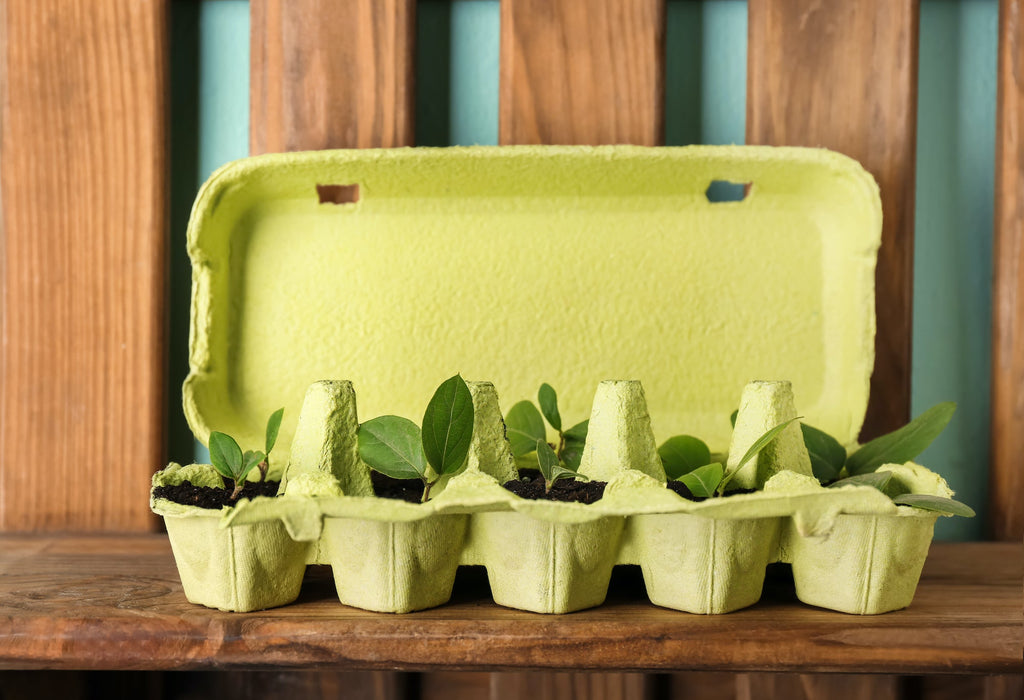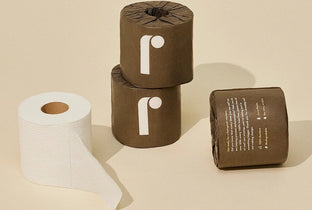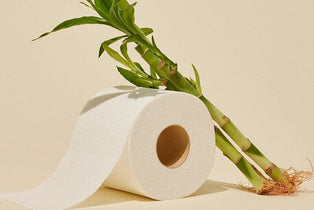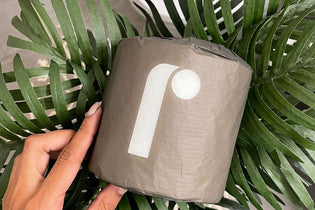
TLDR
Close your eyes and think back to all of the items and products you bought over the last week. Perhaps you picked up milk and cereal for breakfast, grabbed a tray of coffee for your team on the way to work, or purchased a couple of household items like paper towels and tissues.
What you might not have realized at first glance is that all of these items have something in common: cardboard.
While cardboard—and its close cousin paperboard—is used to make everyday items, its life cycle often extends far beyond a single day.
You might be wondering, can you recycle cardboard? The short answer is yes—but it’s a bit more nuanced than that. To find out exactly what cardboard products are safe to toss in the blue bin, read on.
Cardboard: A Primer
Fact: cardboard can be recycled—but there’s a caveat. Because policy and infrastructure around recycling is different in every state, there’s often widespread confusion about which kinds of cardboard can be set out on the curb and which kinds can’t.
Before we get into examples of which kinds of cardboard material can be recycled, it may be helpful to explain the two types of cardboard that are in widespread use today:
- Paperboard – Also known as chipboard, paperboard is made up of one thin layer and is typically used for items like paper cups, tissue boxes, and juice cartons. Other examples might include:
- Shoe boxes
- Printed materials
- Makeup boxes
- Frozen food containers
- Notebook covers
- Six-pack holders
Paperboard comes in a few different grades and can be coated with wax, paint, or other embellishments like glitter for durability or branding purposes.
The second kind of cardboard is:
- Corrugated cardboard – This is what you’ll see on your doorstep the majority of the time when you order products online. It’s made of a thin, wavy material that’s bound between two additional sheets—think of it as a sturdy cardboard sandwich. Producing it certainly takes its toll on our planet, but one encouraging piece of news is that corrugated cardboard can be recycled five to seven times.
With that in mind, let’s put a few specific cardboard products under the microscope to determine whether or not they are recyclable cardboard.

Common Cardboard Products and How to Recycle Them
Can that box that was shipped from Target be recycled alongside the take-out container from last night’s Thai craving? What types of cardboard are more sustainable than others, and can you recycle cardboard with tape on it?
These are some questions you might be wondering as you strive to make choices that help combat climate change. Keep reading for a handy guide on how to do right by cardboard when it comes to the big blue bin.
#1 Paperboard Boxes: Yes
As mentioned, paperboard is frequently used for items like cereal boxes and paper towel rolls. All of these things are perfectly safe recyclable cardboard. Simply, fold or break down boxes in order to create flat parcels for the collectors to grab quickly and easily.
#2 Cardboard Boxes with Tape: Yes
While it’s helpful to remove as much tape from cardboard before putting it in the recycling bin, this step usually isn’t necessary unless your specific region requires it. As part of the recycling process, tape and labels are typically removed at the recycling facility.
#3 Hardcover Books: No
While many hardcover books are bound with corrugated cardboard for stability, the glue used to bind the pages together can’t be recycled. Fortunately, many libraries and nonprofits accept book donations, which is a stellar way to keep them from ending up in landfills.
#4 Egg Containers: Yes
Don’t be fooled by the bumpy grain of cardboard used for these containers—they’re perfectly acceptable as long as they don’t contain eggshells or other food waste.
If you suspect your egg containers might have been contaminated by an unidentified fridge object (the real UFOs), try repurposing them for a DIY project at home:
- Plan a craft day with kids. With a pair of scissors, paint, and a few additional craft accessories, you can turn an old egg carton into any number of animals—from ladybugs and bees to whales and snails.
- If you’ve got a green thumb and a garden to grow, use your egg cartons as an eco-friendly alternative to plastic seed starter pots.
#5 Take-out Boxes: No
Food-soiled cardboard take-out boxes are considered trash, especially if they contain metal handles or wax coatings to prevent leaks. Throw these items away.
While there might not be much hope for cardboard take-out boxes, keep an eye out for reusable plastics. If your tasty Indian fare was delivered in plastic containers, wash them out and use them instead of single-use plastic wrap to store food items in your fridge.
#6 Coffee or Drink Cups: No
Unfortunately, many coffee cups also contain a thin plastic film that’s designed to prevent leakage—ultimately rendering them non-recyclable. One climate-friendly way to reduce your reliance on these single-use items is to bring your own reusable cup from home.
#7 Milk Cartons: Maybe
This one’s tricky and often varies from state to state. According to Business Insider, many cartons actually contain a thin layer of plastic or metal that improves shelf-life. This means that they may have to be recycled with the plastic bottles and metal cans, if your recycling bins are separate. Check with your state or county to find out the exact rules for you.
#8 Pizza Boxes: Maybe
While many local communities don’t accept pizza boxes stained with grease or cheese, some advocates are pushing to change that. A study conducted by a packaging company found that the average amount of grease left on a pizza box won’t negatively impact the recycling process.
That said, it is still common for a recycling facility to not accept pizza boxes with cheese or grease. If you’re attempting to recycle a pizza box, a good rule of thumb is to cut off and throw away the food-stained sections. Then, break the box down as you normally would.

Recycling Cardboard: The Key Steps
As noted above, the vast majority of cardboard can be recycled with one major exception—it needs to be free of food stains. Cardboard that’s contaminated by food or grease presents problems for recycling facilities, and may be sent off to a landfill or even incinerated.
When recycling, follow the instructions below in order to maximize space in the bin and avoid creating a hassle for your friendly neighborhood recycling haulers:
- Step 1 – Remove all plastic, bubble wrap, dry ice containers, and styrofoam peanuts. (Note: Because Reel Paper is committed to using 100% plastic-free packaging material, you can skip this part when ordering from us.)
- Step 2 – Remove any tape stuck to the box. If you can’t get all of it off, don’t worry. Remember, most facilities have the equipment to remove it.
- Step 3 – Break down boxes. Flattening the box will minimize the space it’ll take up.
- Step 4 – Place the broken-down boxes in or next to your recycling bin. (Note: In many areas, wet cardboard isn’t accepted, so be sure to keep an eye on that weather forecast.)
A Little Disclaimer on Community Recycling Rules
Again, the specific rules and regulations around recycling can vary widely from state to state. Some products that seem recyclable simply aren’t, depending on where you live. For example, if you have ever questioned, is wrapping paper recyclable or can you recycle shredded paper, the answer is more complicated than a simple yes or no.
Yes, it’s confusing. If you’ve ever stood over your recycling bin, wondering if you’re doing things correctly, you’re not alone. One in four items thrown into the recycling bin isn’t actually recyclable, which means that despite our best intentions, we sometimes end up contaminating the “good” recycling, thereby creating more trash, delays and additional costs for recycling facilities.
This is why it’s always a smart idea to check your local guidelines for more information about what, when, and how to recycle in your area.
The Packaging Problem and How You Can Help
Now that you have a clearer understanding of how to approach recycling on a smaller scale, let’s take a closer look at the big picture:
- Over 90% of all the products that are shipped in the US use corrugated cardboard boxes as the packaging material.
- In 2020, the U.S. produced over 400 billion square feet of cardboard. Put another way, that’s enough cardboard to cover the entire state of Maryland—and then some.
- As more people have begun to rely on online shopping for convenience as well as the sheer variety of products offered, the production and use of cardboard packaging is spiking. In fact, the American Forest & Paper Association reports that the production of cardboard has increased nearly nine times in the last decade.
Online retail is here to stay, which means that, for the present moment, so is cardboard. That said, more and more Americans are making the choice to shop with earth-minded brands in order to reduce their individual impact on the planet.
At Reel Paper, we exclusively ship our products in corrugated containers which are 100% plastic-free (including the tape) and can be easily broken down and recycled.
Reduce Your Reliance on Cardboard with Reel Paper
In 2021, Americans recycled 91.4% of cardboard boxes. This is certainly an encouraging start but you may still be wondering how you can reduce your reliance on common household paper products such as toilet paper and paper towels. If you were wondering, are paper towels recyclable, the answer is no, so you should look into alternatives.
Reel Paper’s tree-free, bamboo toilet paper and recycled paper towels are made of eco-friendly materials that are sustainable and completely plastic- and BPA-free. Our products are biodegradable, making them safe for all kinds of plumbing systems, and strong yet soft.
In addition to counteracting many of the harmful and wasteful practices of the paper industry, our premium bamboo paper products save trees and protect our ecosystems. Between recycling and using our toilet paper and paper towels, you’re making a commitment to minimize your impact on the environment and keep our forests full. In addition, Reel Paper offers delivery in recyclable, compost-friendly packaging that’s free when you subscribe.
Try Reel Paper today and make a small choice that’s good for you and good for our planet.
Sources:
Recycle Across America. Recycling is in a Serious Crisis. So let's fix it, shall we? https://www.recycleacrossamerica.org/recycling-facts
Wall Street Journal. Cardboard Boxes Have Never Been in More Demand—or More Expensive. https://www.wsj.com/articles/corrugated-boxes-have-never-been-in-more-demandor-more-expensive-11617189646
Wikipedia. List of U.S. states and territories by area. https://en.wikipedia.org/wiki/List_of_U.S._states_and_territories_by_area
The American Forest & Paper Association. U.S. Paper Industry Reaches Record for Containerboard Production in 2021. https://www.afandpa.org/news/2022/us-paper-industry-reaches-record-containerboard-production-2021
The American Forest & Paper Association. Here’s How to Recycle Your Cardboard Boxes. https://www.afandpa.org/news/2018/heres-how-recycle-your-cardboard-boxes
Business Insider. You're recycling your milk carton all wrong. https://www.businessinsider.com/how-to-recycling-milk-cartons-2017-2?r=MX&IR=T
WestRock. Incorporation of Post-Consumer Pizza Boxes in the Recovered Fiber Stream. https://www.westrock.com/greasecheesestudy
Mic. Americans are terrible at recycling — this is what happens when you put something in the wrong bin. https://www.mic.com/articles/190974/americans-are-terrible-at-recycling-this-is-what-happens-when-you-put-something-in-the-wrong-bin




0 comments